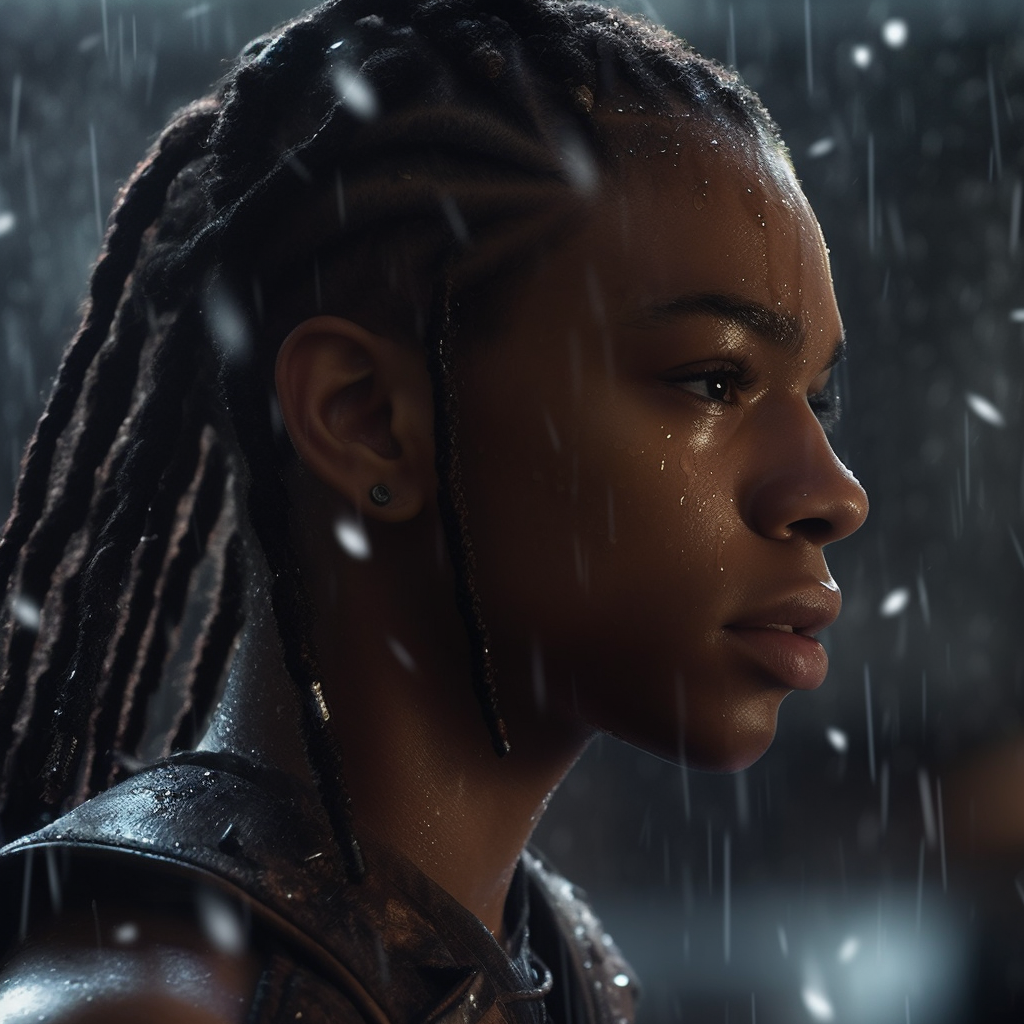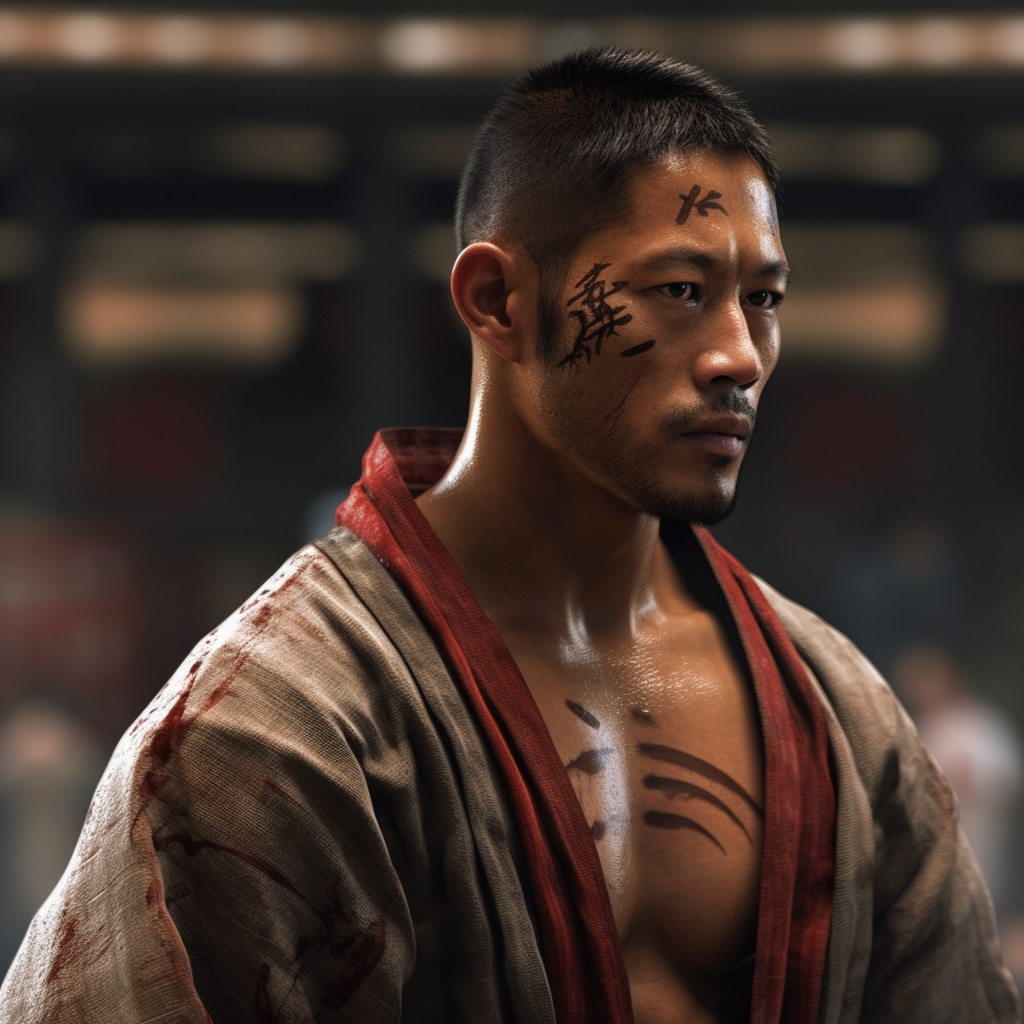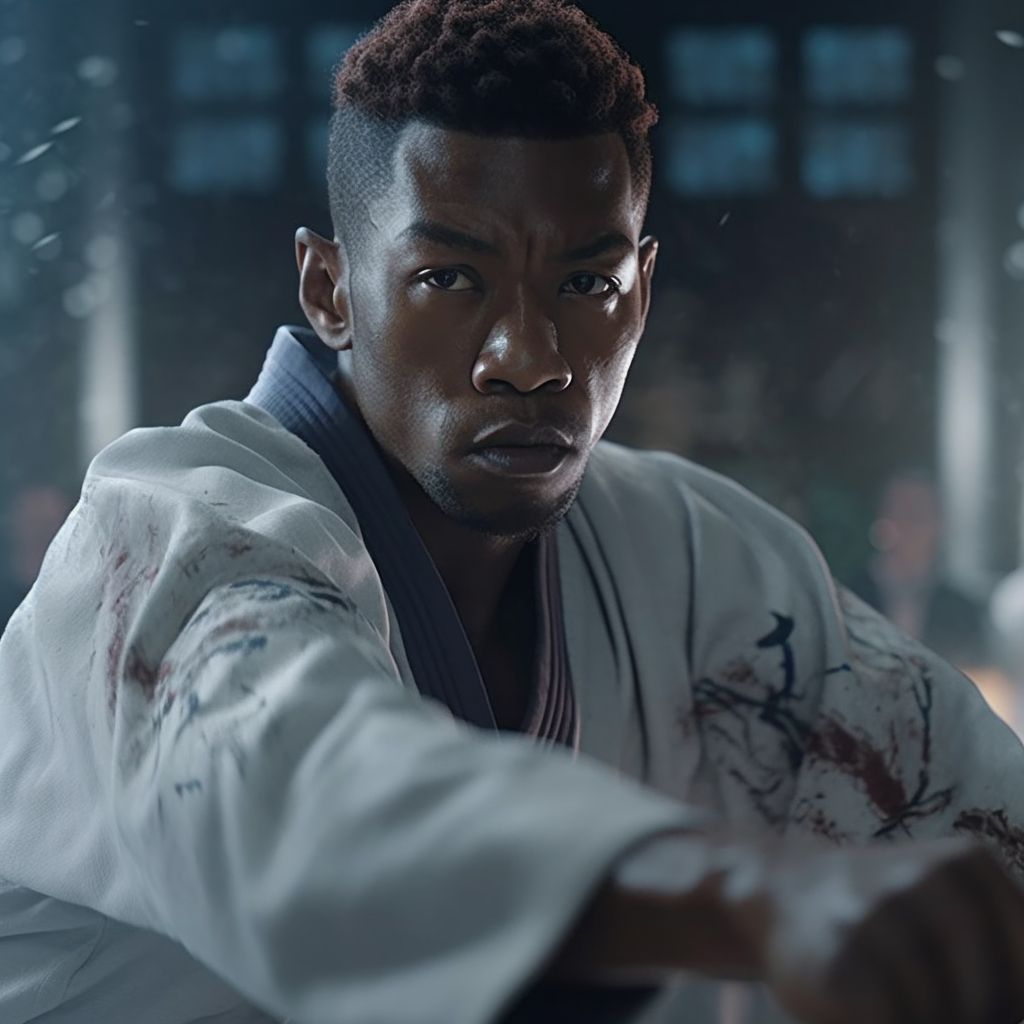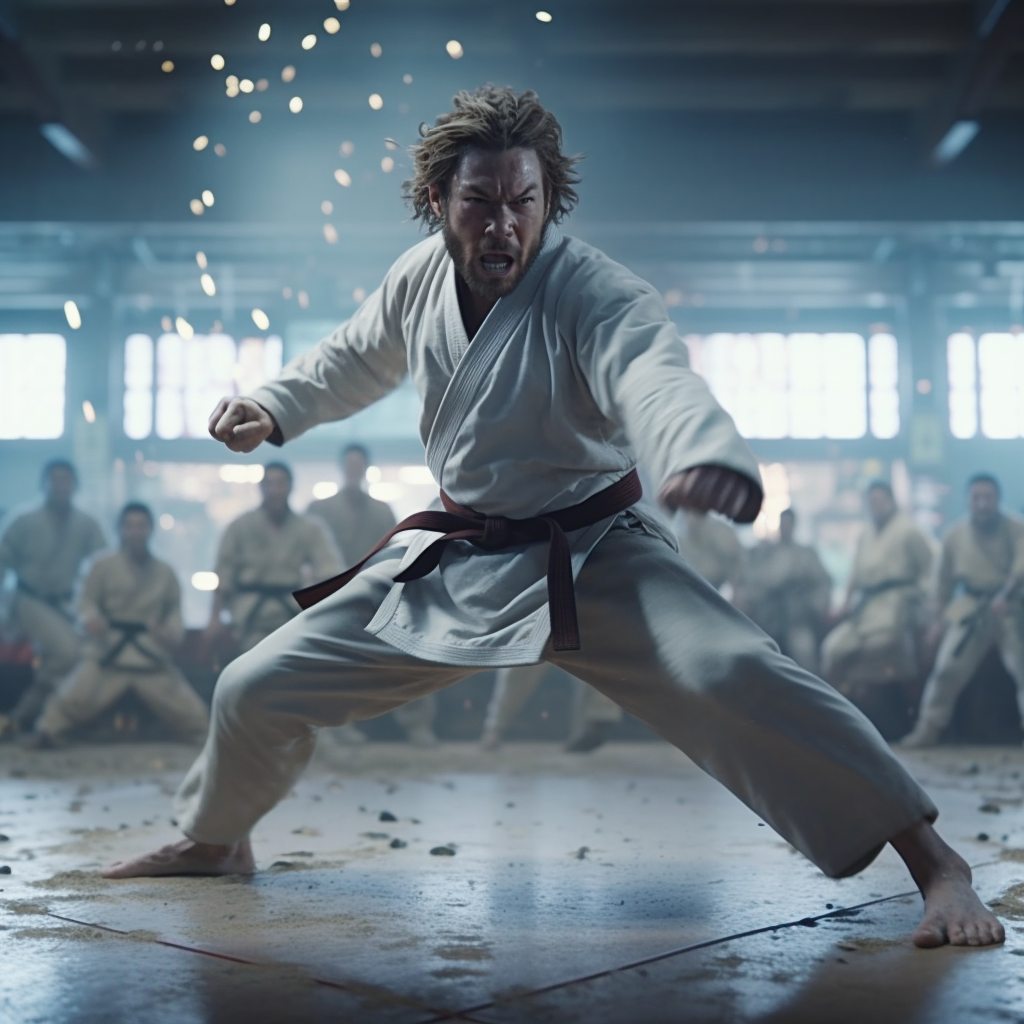We’ve all seen the breathtaking scenes of flying kicks, spinning punches, and unbreakable stances in movies. But have you ever thought about how martial arts are portrayed in the realm of literature? Today, we’re going to venture into this lesser-explored territory, including a look at the brilliantly action-packed novel, “Minor Assassin” by Jackiem Joyner.
1. The Art of Martial Arts in Literature
Creating a convincing fight scene on paper is no small feat. The writer must keep the pace brisk, yet intelligible; the movements need to be vivid, but not overbearing. They must build tension, demonstrate characters’ skills and limitations, and stay true to the martial art form itself.
For an author, conveying the beauty and complexity of martial arts through words can be as challenging as the art itself. It’s a dance of language, combining physical movement with emotional depth and psychological insight.
2. Fictional Fighting: The Reality and the Drama
Writers often take creative liberties with the realities of martial arts. They increase the drama and pace, favoring thrilling encounters over realistic combat sequences. But when it’s done right, these stories can inspire a deeper understanding and respect for these ancient practices.
In fiction, martial arts isn’t just about combat – it’s about discipline, philosophy, and the transformation of characters. And it’s this deeper side of martial arts that some authors manage to capture with a stunning precision.
3. “Minor Assassin”: The Child Warrior

Jackiem Joyner’s “Minor Assassin” is an excellent example of martial arts in fiction done right. Joyner takes us on a journey with Jon, an eight-year-old kid who transforms into a force of retribution. As Jon learns martial arts in a secluded village, we see not only the physical skills he acquires, but the mental fortitude he develops.
What sets “Minor Assassin” apart is its depiction of martial arts as more than just fighting. It’s Jon’s path to survival, his tool for justice, and his link to his past. Joyner creates visual imagery through his writing, making readers feel every punch, kick, and grapple that Jon encounters.
4. Punching Above Its Weight
“Minor Assassin” packs a wallop. The story delivers a cinematic level of action from start to finish, as if you’re watching a high-stakes martial arts movie unfold in your mind. Readers feel the tension in every fight scene, empathize with Jon’s emotional turmoil, and experience the vivid ‘Asian touch’ that Joyner seamlessly weaves into the narrative.
The transformation of Jon, from an innocent child to a driven, martial arts-trained avenger, showcases the power of discipline, perseverance, and willpower, making the story a resounding tribute to the spirit of martial arts.

5. Martial Arts: A Storytelling Tool
Martial arts in fiction is more than just the punches and kicks – it’s a storytelling tool that deepens character development, enhances plot progression, and adds a layer of complexity and cultural significance.
In “Minor Assassin,” Jon’s journey through the martial arts is a testament to the power of will and resilience in the face of adversities. Just like Jon, who transforms his life through martial arts, books like “Minor Assassin” are transforming the way martial arts is portrayed in fiction, providing a more nuanced, dramatic, and emotionally engaging narrative.
6. “The Bourne Identity”: Spy Games and Fists of Fury
Here’s a novel that swings into action like a well-aimed roundhouse kick: Robert Ludlum’s “The Bourne Identity.” Our hero, Jason Bourne, is a martial arts maven with a mysterious past, forced to use his deadly skills to stay alive. It’s like “The Three Stooges,” but instead of bonking heads, Bourne is delivering bone-crunching blows to bad guys. Ludlum has skillfully infused the story with kinetic martial arts scenes that will leave readers clutching the edge of their seats, just like they might clutch a popcorn tub during a particularly suspenseful movie.
7. The Intricate Dance of Inner Conflict in “The Joy Luck Club”
Taking a turn from the usual high-octane action and heart-pounding adrenaline of traditional martial arts storytelling, Amy Tan’s “The Joy Luck Club” serves up a dish as intricate as a dim sum platter, filled with the rich flavors of internal struggle and cultural conflict. The book might not have the flying kicks or shattering punches, but don’t let that fool you; it embodies the essence of martial arts in a deeply metaphorical sense.
This novel introduces us to four Chinese women in San Francisco who start a club known as “The Joy Luck Club,” playing the Chinese game of Mahjong while sharing their stories. The novel reveals the fight each woman faces, an emotional kung fu of sorts, to reconcile their Chinese heritage with their American surroundings. Just like in martial arts, where the external fight is a mirror to the internal one, the characters in this story are battling internal foes: past traumas, cultural identity, generational gaps, and personal fears.
The Intricate Choreography of Internal Battles
Tan weaves her intricate storytelling as smoothly as the flowing movements of Tai Chi. Each character fights through their own story, an elegantly choreographed routine, brimming with the highs and lows of their emotional landscapes. You’ll find yourself immersed in their struggles, desires, and sacrifices, feeling a part of their fight, their dance.
Now, let’s get something straight, “The Joy Luck Club” doesn’t fit the mold of a typical martial arts book. Instead, it spins a tale of introspection, personal battles won and lost, standing as a true testament to the resilience of the human spirit. Martial arts, in its core, teaches us that we often face our most formidable opponent in ourselves. The most rewarding victory comes from overcoming our internal demons. Tan’s novel brilliantly exemplifies this principle, asserting that sometimes, the fiercest battles take place not in the dojo, but within our hearts.
You may also like Top 10 Female Protagonists in Teenage Science Fiction

8. Navigating the Combat Zones of Reality and Virtuality in “Snow Crash”
Just when you thought martial arts was confined to the realm of the physical, Neal Stephenson’s “Snow Crash” barrels into the scene like a hyperactive kid in a candy store, turning everything we thought we knew on its head. It’s a crazy, fast-paced romp through a future where reality and the virtual world blend seamlessly, and martial arts has found a new playground in the digital realm.
Stephenson’s main man, Hiro Protagonist (Yeah, you read that right! Who says names can’t be punny?), is not your average sword-wielding hero. He’s a hacker, a pizza delivery guy, and a samurai warrior, all rolled into one. He’s as comfortable slicing and dicing in the virtual reality of the Metaverse as he is navigating traffic in the real world. Imagine doing yoga on a balance beam, while solving a Rubik’s cube, and you’re halfway to understanding Hiro’s life.
“Snow Crash”: A Digital Dojo of Modern Martial Arts
The fight scenes in “Snow Crash” have a vibrancy that’s as exciting as watching your dad try to beat your high score in a video game. They blur the line between the real and the virtual, the physical and the digital. Hiro uses his martial arts prowess to outwit, outmaneuver, and outfight his enemies, all with the flair of a pro gamer on an energy drink binge.
The thing about “Snow Crash” is that it’s not just a story about martial arts in the traditional sense. It’s a commentary on the digitization of society and how the ancient art of combat has adapted to this change. It’s about a future where martial arts is as much about mental agility and virtual reflexes as it is about physical strength and technique.
In conclusion, Stephenson’s “Snow Crash” is a martial arts story for the modern age, a narrative that pushes boundaries as it explores the exciting junction of technology and tradition. It tells us that whether in the physical or virtual world, the principles of martial arts remain the same: discipline, strategy, and skill. And, of course, having a cool samurai sword never hurts!
9. “Fight Club”: Punching Reality in the Face
In Chuck Palahniuk’s “Fight Club,” punches are thrown like careless whispers. The book carries the tale of an insomniac protagonist embarking on an explosive journey of self-discovery, rebellion, and yes, a whole lot of fist fights. However, these aren’t your conventional martial arts maneuvers; it’s a raw, primal, bare-knuckle form of self-expression. Imagine a ballet, but instead of tutus and pointe shoes, there’s blood, sweat, and black eyes. If that doesn’t get your adrenaline pumping, I don’t know what will!
10. “Ender’s Game”: The Art of Combat, Young Genius Style
“Ender’s Game” by Orson Scott Card is like the chess game you played at your family gathering, but instead of knights and pawns, there are child geniuses and alien invaders. The novel takes us through the life of Ender Wiggin, a young boy trained in the art of interstellar warfare. We see him mastering not just the physical maneuvers but also the strategic aspect of combat, which, let’s be honest, is just a turbocharged, intergalactic version of martial arts. It’s like a big family brawl, but instead of Uncle Bob being thrown out, we’re talking about aliens being kicked out of the solar system.
For a deeper dive into the history and philosophy of martial arts that these fiction books often draw upon, check out this comprehensive article on the “Origins and Evolution of Martial Arts” at beemat

Wrapping Up: The Final Roundhouse Kick
Martial arts in fiction is like the secret ingredient in your grandma’s famous casserole — it adds a punch of flavor that leaves you wanting more. It’s not always about the high-flying kicks or the bone-crunching punches; sometimes, it’s the internal struggle, the discipline, the philosophy, and the transformation of characters that truly showcase the essence of martial arts.
From the tumultuous journey of Jon in “Minor Assassin,” to the existential fisticuffs in “Fight Club,” and the strategic space battles in “Ender’s Game,” we see that the portrayal of martial arts in literature is as varied as the martial arts themselves.
Each story weaves its unique pattern, giving us a glimpse into different aspects of martial arts. It’s like attending a potluck where everyone brings a different dish but they all contribute to one fantastic feast. So, if you’ve developed a newfound curiosity for martial arts in fiction, don’t stop here. There’s a whole world of action-packed, wisdom-infused, karate-chopping literature waiting for you. Remember, the first rule of this fight club is: You definitely should talk about it, and often!

